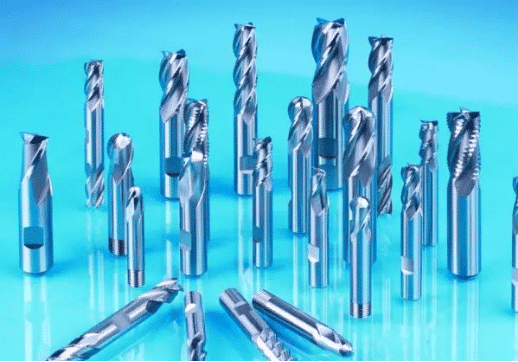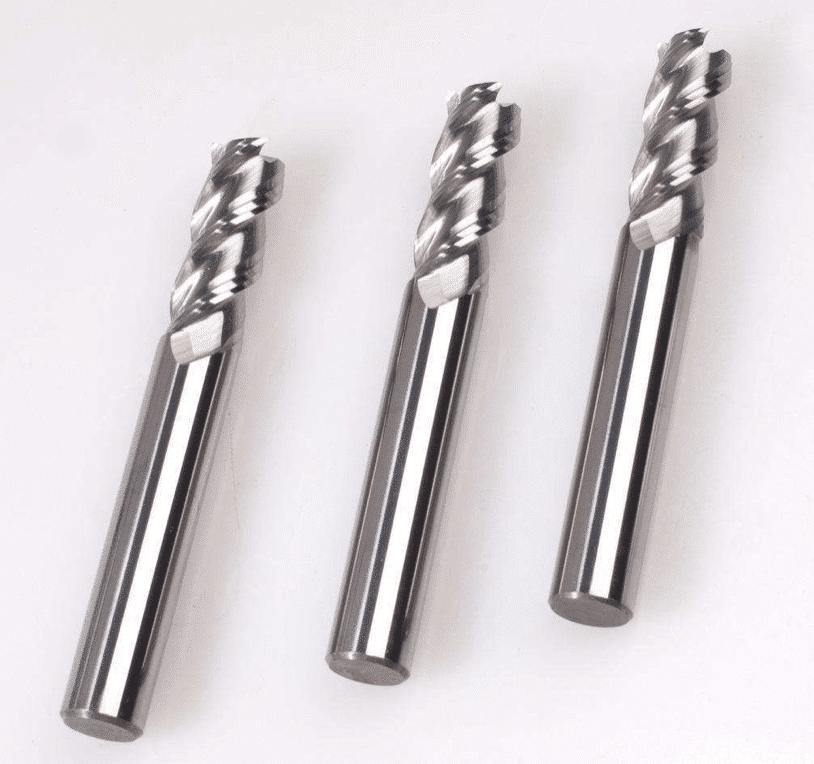उपयुक्त अंत मिलों को चुनना मुश्किल है? ये मूल बातें हो सकती हैं मदद
The main cutting edge of the end mill is a cylindrical surface, and the cutting edge on the end face is a sub-blade. When the end mill without the center edge is working, it cannot make a feed motion along the axial direction of the milling cutter. End mills are currently widely used in various sectors such as automobile manufacturing, logistics, molds, machinery, etc., and because of the increasing use of various aspects, the application requirements are also increasing. Therefore, various problems that are common in the use of end mill applications are summarized and answered.

[प्रश्न] अंतिम चक्की के दो दांतों का of12 कैसे होना चाहिए?
[उत्तर] सबसे पहले, रेत पहिया जमीन होना चाहिए, पीसने का किनारा थोड़ा कोण है, मिलिंग कटर, ब्लेड पर ध्यान देना चाहिए, बाहर अंदर से अधिक होना चाहिए ... अंदर का ढलान भी तिरछा नहीं होना चाहिए, शायद इस तरह, यह अभी भी अधिक अभ्यास केवल पीसने के लिए है।
[प्रश्न] एंड मिल क्या है और डिस्क मिलिंग कटर क्या है? अंतर क्या है?
[उत्तर] मिलिंग स्लॉट्स के लिए की-कटर के बजाय एंड मिल्स का इस्तेमाल आम तौर पर मिलिंग एंड फेस के लिए किया जाता है। डिस्क मिलिंग कटर का उपयोग मुख्य रूप से बड़े अंत चेहरों को मिलाने के लिए किया जाता है, क्योंकि डिस्क मिलिंग कटर की सीधी मिलिंग आम तौर पर बड़ी होती है, मिलिंग के लिए मिलिंग एंड फेस तेजी से होता है, और आरा ब्लेड मिलिंग कटर आमतौर पर मिलिंग के लिए उपयोग किया जाता है।
[क्यू] अंत चक्की खड़ी कटौती क्यों नहीं कर सकते?
[उत्तर] जब अंतिम चक्की घूमती है, तो निचले किनारे का मध्य बिंदु अपेक्षाकृत स्थिर होता है। इसमें कोई मशीनेबिलिटी और चिप हटाने की सुविधा नहीं है, इसलिए इसे लंबवत नहीं काटा जा सकता है।
[प्रश्न] अंतिम चक्की की फ़ीड दर कैसे निर्धारित की जाती है?
[उत्तर] उपकरण, वर्कपीस और मशीन टूल जैसे कारकों के साथ कटिंग राशि के चयन पर विचार किया जाना चाहिए। अंत चक्की का मुख्य काटने का किनारा परिधीय किनारा है। प्रति दांत फ़ीड आमतौर पर परिष्करण के दौरान लगभग 0.1 है। राशि आमतौर पर 0.25 से 0.3 मिमी तक चुनी जाती है। विशेष रूप से, इसे काटने के मापदंडों जैसे कटिंग गति, कट की अक्षीय गहराई और कट की रेडियल गहराई के साथ मेल खाना चाहिए।

[प्रश्न] एंड मिल और बॉल एंड मिल और इसके चयन सिद्धांत में क्या अंतर है?
[उत्तर] एंड मिल्स और बॉल एंड मिल्स, एक बॉल हेड है, एक फ्लैट बॉटम है, एंड मिल मुख्य रूप से पारंपरिक मशीनिंग के लिए है, और बॉल एंड मिलिंग कटर का उपयोग सतह को मिलाने के लिए किया जा सकता है।
[प्रश्न] अंत चक्की के लिए कोलिट और टैप के लिए कोललेट के बीच क्या अंतर है? क्या आपको टैप करते समय कंपनी के हैंडल का उपयोग करना होगा?
[उत्तर] हालांकि सीधी टांग एंड मिल के लिए कोललेट का उपयोग कठोर दोहन के लिए नल को पकड़ने के लिए किया जा सकता है, प्रभाव अच्छा नहीं है, आमतौर पर छोटे व्यास के नल को कोई समस्या नहीं होती है; नल के लिए ईआर कोलेट एक वर्ग खांचे के साथ है, यही है, नल हैंडल के फ्लैट-टेल्ड सीमा समारोह अब सामान्य उपकरण निर्माताओं में उपलब्ध है।
[Q] What is the difference between a reamer and an end mill?
[Answer] The reamer is a straight edge and the end mill is a spiral edge. The milling cutter has a bottom edge and the reamer does not! The reamer is used to finish the hole, while the milling cutter can be milled, washed, and side washed! Use is different!
[प्रश्न] अंतिम चक्की की फ़ीड दर कैसे निर्धारित की जाती है?
[उत्तर] उपकरण, वर्कपीस और मशीन टूल जैसे कारकों के साथ कटिंग राशि के चयन पर विचार किया जाना चाहिए। अंत चक्की का मुख्य काटने का किनारा परिधीय किनारा है। प्रति दांत फ़ीड आमतौर पर परिष्करण के दौरान लगभग 0.1 है। राशि आमतौर पर 0.25 से 0.3 मिमी तक चुनी जाती है। विशेष रूप से, इसे काटने के मापदंडों जैसे कटिंग गति, कट की अक्षीय गहराई और कट की रेडियल गहराई के साथ मेल खाना चाहिए।
[Q] What are the steps for milling the end mill?
[Answer] First install the end mill, then move the end mill to the top of the workpiece to be milled, gently lick the upper surface of the workpiece with the end teeth of the end mill, and then lift the dial of the milling machine Zero; then move the end mill to the side of the workpiece, lower the end mill to the side of the workpiece, then gently lick the side of the workpiece with the side of the cutter, and set the handle dial in the corresponding direction to zero, then Start milling the steps. The depth of the knife is determined according to the size of the machining allowance, the strength of the material, and the size of the milling cutter. After eating from at least one knife, it is completed by dividing into several knives.
[Q] What is the difference between an end mill and a keyway cutter?
[Answer] The main difference between the end mill and the keyway cutter is that the end mill is used to machine flat or cylindrical surfaces, so its outer diameter is relatively loose, and the keyway cutter is used to machine the keyway. The outer diameter dimension directly affects the mating quality of the keyway and the key, so the tolerance is stricter; in addition, the keyway milling cutter has only two blade belts for machining holes, and the end mill has more than two blade belts. The end face of the end mill has a center hole, and the end face of the keyway cutter has no center hole. Therefore, the end mill is not able to feed directly down, deep down, and the center hole will withstand. The keyway cutter can be fed directly down. In addition, the keyway milling cutter, as the name implies, is used to mill the keyway, so the dimensional accuracy of the outer diameter is very high, and generally can reach an accuracy of about 0.01 mm.
